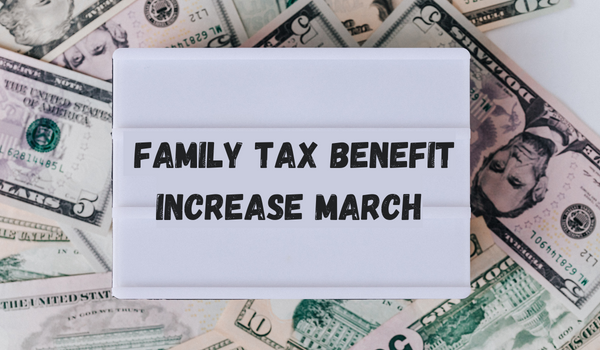You will learn about the Family Tax Benefit Increase of March 2024 in this article: when the benefits under Parts A and B will be increased in amount.For Australians, the Family Allowance (FTB) is a federal financial support payment that helps with additional living expenses associated with raising children. This tax benefit is given in two installments, with help determined by the advantages per child and per family. Every year, the Department of Social Service of the Federal Australian Government makes some adjustments in response to inflation and the growing cost of living. Continue reading this article to learn more about the Family Tax Benefit Increase March and other related topics.
Family Tax Benefit Increase March 2024
One kind of federal assistance program that helps qualified households raise their kids is the Food Stamp Benefit (FTB). The Family Tax Benefit Australia (FTB) is payable either as a lump sum or as a fortnightly payment, depending on the individual circumstances. It is based on two distinct components. This program was launched by the Australian Federal Government to assist low- and moderate-income households with the expenses associated with raising children.
The Increase in Family Tax Benefits March is dedicated to addressing inflation and the growing cost of living. The FTB Part A and B payment rates, as well as the results of their income test for both parts, will determine which eligible families receive these benefits. Care for the children is provided in 2024 based on the needs and number of dependents. In addition, the candidates will receive a 3.5% boost in tax advantages that fall short of their family tax benefits.
When Part A and Part B Benefits are Coming with Increased Amount
The Increase in Family Tax Benefits In light of the growing cost of living and inflation, a March payment will be provided. The FTBs are provided under two distinct benefit categories, each with its own set of conditions. Family Tax Benefits Part B is paid according to the family’s circumstances and provides additional assistance to single parents with one primary source of income. Family Tax Benefits Part A is paid per kid and the amount varies based on the family’s circumstances.
The FTB is paid out in two installments during the course of each year, or all at once. Increased Amounts and Supplements: The federal Part A and Part B supplement comes with additional benefits for infant supplements, energy supplements, and multiple birth allowance in addition to the regular amounts. In addition, the Part A recipients must fulfill their immunization and other health check criteria.

The federal portion of the annual rate that is paid to each kid is known as the Family Tax Benefit Increase March Part A. Families with adjusted taxable incomes of little more than 80K AUD are eligible to receive the supplement, which is only made available at the conclusion of each fiscal year following the reconciliation of the FTB. In addition, filing a tax return by the deadline for both you and your spouse is a requirement for receiving the FTB Part A payment.
The annual rate per household includes the household Tax Benefits Increase March Part B payment. Supplements are only given out following the fiscal year’s conclusion. The person filing their taxes or their spouse filing on their behalf is required in order to get the FTB Part B payment supplement. The various outstanding debts are mitigated by the Part B supplement.
The age of the kid you are receiving benefits for determines the maximum benefits rate under FTB Part A. For children under the ages of 0 to 12, $277.48 for those under the ages of 13 to 15, and $277.48 for those under the ages of 16 to 19 who fulfill the study requirement, the maximum cost for component A every fortnight is $213.36. Together with this, the authorized care organization will receive $68.46 for every kid under the age of 19.
Based on the age of the youngest child, the Family Tax Benefit Increase March Part B supplement offers a maximum rate of $181.44 for children under the age of four and $126.56 for those between the ages of five and eighteen.
Click Here to view further articles.
